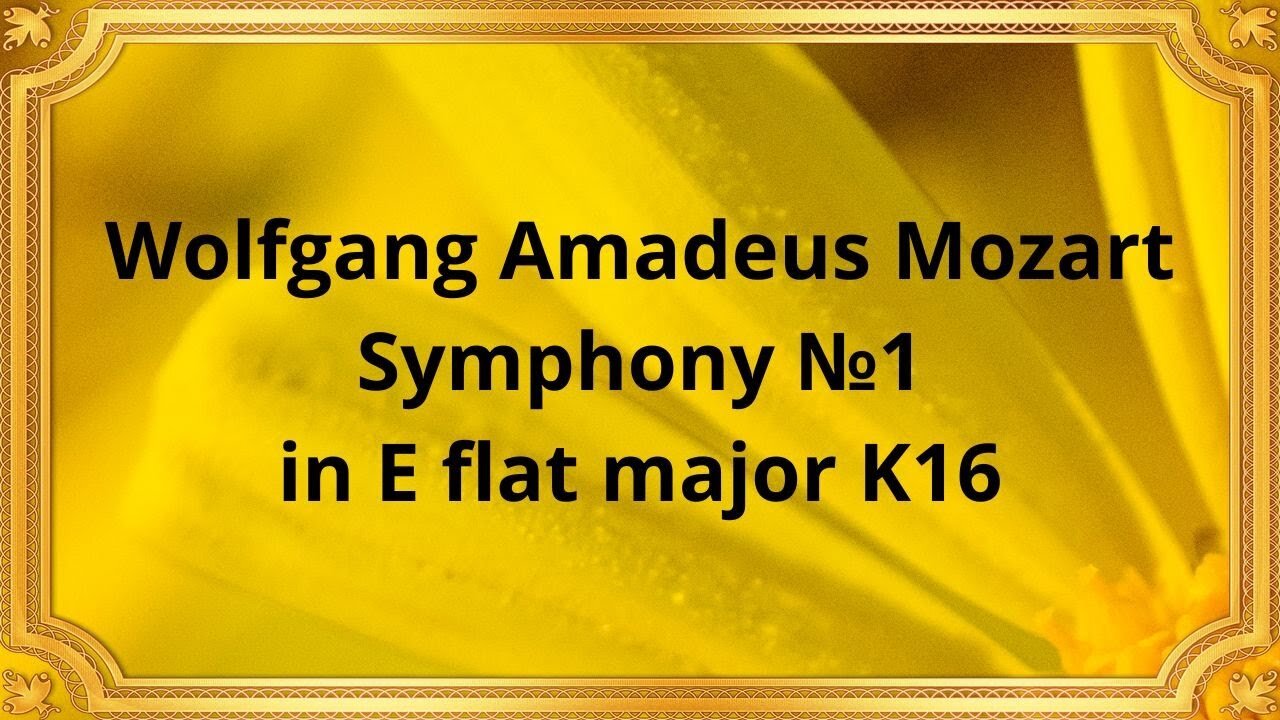Premium Only Content

Wolfgang Amadeus Mozart Symphony №1 in E flat major K16
#Mozart#Chamber_music#Classical_music#Symphony#Musical_composition
Mozart Symphony No. 1 in E flat major K16 is one of the earliest works of the legendary composer, Wolfgang Amadeus Mozart. Composed when he was just eight years old, this symphony showcases the young prodigy's immense talent and creativity. In this article, we will dive deep into the history, structure, and significance of this symphony.
Mozart composed Symphony No. 1 in E flat major K16 in 1764, during his family's visit to London. The young composer had already gained fame across Europe as a child prodigy, and his family was touring different countries to showcase his talents. During his stay in London, Mozart composed a series of works, including his first symphony.
The symphony was likely written for the orchestra of the Italian opera company in London, which was led by Giovanni Battista Sammartini. Mozart had the opportunity to attend performances by this orchestra and may have been inspired to compose for them.
Mozart Symphony No. 1 in E flat major K16 is a classical-style symphony that consists of three movements:
Allegro molto
Andante
Molto allegro
The first movement, Allegro molto, is in sonata form and begins with a bold introduction in the brass section. This is followed by the main theme, which is presented by the strings. The development section explores the different themes introduced in the exposition before returning to the main theme in the recapitulation.
The second movement, Andante, is a slow and lyrical piece that features a beautiful melody in the strings. The clarinet also plays a prominent role in this movement, adding a warm and expressive quality to the music.
The final movement, Molto allegro, is a lively and energetic piece that features rapid passages in the strings and a playful theme in the woodwinds. This movement is also in sonata form and features a vibrant coda that brings the symphony to a thrilling conclusion.
Mozart Symphony No. 1 in E flat major K16 may be one of the composer's earliest works, but it still holds great significance in the classical music canon. It showcases Mozart's remarkable talent and creativity at a young age, and provides a glimpse into the development of his musical style.
The symphony also reflects the classical style of the time, with its use of sonata form and the contrast between the different movements. It is a perfect example of the classical principles of balance, clarity, and simplicity.
Conclusion
Mozart Symphony No. 1 in E flat major K16 is a masterpiece of classical music that holds great significance in the history of music. Despite being composed when Mozart was just eight years old, it showcases his remarkable talent and creativity. The symphony's structure and style also reflect the classical principles of the time, making it a valuable piece of the classical music canon.
-
 36:10
36:10
Classical music_Music Inspiration
1 month agoJohannes Brahms Symphony No. 2 in D major, Op. 73
501 -
 35:36
35:36
Rethinking the Dollar
1 hour agoBombs Drop, Stocks Flop & GOLD Tops | Morning Check-In
159 -
 1:07:59
1:07:59
Dear America
2 hours agoWW3?! Israel STRIKES Iran!! + Judge BLOCKS Trumps National Guard In LA!! WHAT IS HAPPENING‼️
78.1K162 -
![🔴[LIVE] Markets Plummet, Breaking News & Payday Friday || The MK Show](https://1a-1791.com/video/fww1/7b/s8/1/H/N/V/S/HNVSy.0kob-small-The-MK-Show-June-13th.jpg) LIVE
LIVE
Matt Kohrs
10 hours ago🔴[LIVE] Markets Plummet, Breaking News & Payday Friday || The MK Show
805 watching -
 LIVE
LIVE
Badlands Media
8 hours agoBadlands Daily: June 13, 2025
4,991 watching -
 16:31
16:31
Bearing
2 hours agoDr. Phil SPITS FACTS at Woke Leftist Losers “We are a Country of Laws” ⚡💥
6.82K26 -

Chicks On The Right
5 hours agoIsrael strikes Iran, Padilla creates circus, Dem Govs get grilled, Gavin's emotional rollercoaster
33.2K9 -
 4:01:21
4:01:21
The Bubba Army
1 day agoIsrael SMASHES Iran! - Bubba the Love Sponge® Show | 6/13/25
105K52 -
 47:25
47:25
Friday Beers
15 hours ago $4.39 earnedWe Accidentally Unleashed a Skeleton Army in D&D
51.7K5 -
 19:00
19:00
Kitco NEWS
18 hours agoWestern Investors Drive Gold Surge: Gwen Preston Highlights Market Shift
29.8K7